In a series of interviews conducted by TheCSRUniverse, we unveil the impact of the HCLTech Grant, a powerful force for positive change in rural India. This Corporate Social Responsibility (CSR) initiative by HCLTech, managed by HCLFoundation, goes beyond simply providing funds.It focuses on empowering NGOs through rigorous selection processes, continuous support, and comprehensive project monitoring to ensure sustainable development in the fields of environment, health, and education.
Dr. Nidhi Pundhir, Vice President, Global CSR, HCLTech and Director, HCLFoundation, sheds light on the program's goals and its success in empowering NGOs working towards rural development. With a focus on sustainability and measurable impact, Dr. Pundhir highlights the comprehensive approach taken by HCLTech Grant, ensuring that supported initiatives not only address immediate needs but also contribute to the long-term well-being of the communities.
Following her insights, we delve into the work of three NGOs that have received HCLTech Grants: The Corbett Foundation, SANGATH, and Makkala Jagriti. These interviews explore their specific projects and how they are creating lasting positive change in rural India.
Scroll down for detailed insights.
Q&A
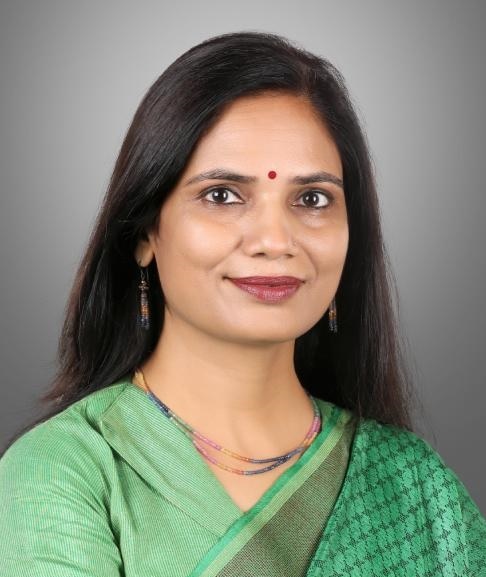 Driving Meaningful Change: Insights from Dr. Nidhi Pundhir
Driving Meaningful Change: Insights from Dr. Nidhi Pundhir
Q. HCLTech Grant has been running for nine years. What are some of the key learnings from past editions that will inform the selection process or project support strategies moving forward?
A. At HCLFoundation, we consider HCLTech Grant to be much beyond a typical CSR program. Our commitment is to empower NGOs. We accomplish this by providing process-driven solutions that drive meaningful progress in the environment, health, and education. Started in 2015, HCLTech Grant today is a result of all the significant insights that we gathered each year helping us shape our approach. Right from the beginning, we've maintained a rigorous, process-oriented approach to needs assessment during the proposal stage by NGOs. Our thorough due diligence process takes 250 days; we believe in its importance. This detailed evaluation ensures the viability of proposed projects and an NGO's capacity to deliver tangible results in environment, health, and education. After the selection, the HCLFoundation team thoroughly monitors the entire effort to ensure timely delivery of goals.
To ensure the fulfillment of our objectives, we meticulously manage projects through a process-driven approach. This comprehensive framework fosters open communication and regular dialogue with all stakeholders. Our support begins with a thorough needs assessment conducted by NGOs during the proposal stage, to identify critical issues/areas of intervention in the specific thematic areas (Education/Health/Environment) in the target geographies. Following the selection of partners and finalization of projects after the 250 days’ due diligence process, baseline surveys and assessments are carried out to further refine project objectives and strategies, setting the stage for impactful interventions tailored to local contexts. And as projects progress, our comprehensive impact assessments, guided by predefined selection parameters, helps us to ensure the required impact of the project.
Central to our approach is the rigorous monitoring and review of project progress. Through field visits and regular progress reports, we ensure that projects stay on track and deliver on their intended goals.
Going forward, through these learnings and more to come, we endeavour to realize sustainable socio-economic development, addressing critical areas of development in India.
Q. HCLTech Grant has demonstrably transformed many lives. How does HCLFoundation go beyond basic metrics to measure the deeper, long-term impact of these projects on rural communities?
A.To be able to fulfil the larger goals that the NGOs have set for themselves, it is crucial that certain processes are put in place from HCLFoundation’s end. Our approach involves rigorous monitoring of project effectiveness and goal attainment, ensuring timely delivery of objectives. Regular field visits provide firsthand insights, complemented by a stringent quarterly reporting mechanism. Partners are required to submit detailed reports, which undergo thorough review both programmatically and financially. To enhance efficiency and facilitate real-time tracking, we leverage an automated system for monitoring and evaluation.
Additionally, we engage external agencies and consultants to conduct comprehensive Monitoring and Evaluation (M&E) exercises. This multi-layered approach enables us to assess the holistic impact of projects, going beyond surface-level metrics to understand the sustained transformation experienced by rural communities over time.
Q. The program emphasizes partnerships and capacity building. Can you share some concrete examples of how HCLFoundation fosters the long-term sustainability of the NGOs and their projects beyond just the grant funding?
A. The many success stories of HCLTech Grant’s partner NGOs on ground is a testament of its efforts towards ensuring long term sustainability. For example, the project ‘Community-based Safety-net’ implemented by Child in Need Institute (CINI, 2017), has led to 16 per cent less underweight children, 14 per cent reduction in childhood stunting in the intervention area, and 12 per cent decrease in anaemia levels in pregnancy. In Nagaland, a community-owned healthcare approach, implemented over 5 years under the project ‘Life Connect’ in partnership with Eleutheros Christian Society (ECS, 2018), in 72 villages of Nagaland has had a staggering outcome: the maternal deaths during delivery are negligible now.
In line with the Paris Agreement and India's environmental commitments, HCLTech Grant projects actively promote sustainability. Initiatives like 'iCare' by Foundation for Ecological Security and 'Connecting Landscapes' by Wildlife Trust of India focus on community-led sustainability, reforestation, wildlife protection, and habitat restoration, aligning with global climate goals. Similarly, our education projects resonate with the goals of the National Education Policy and SDG4. Collaborations with first ever HCL grantee ’Going to School’ is a testament of HCLTech Grant’s fundamental approach towards projects in education.
Additionally, beyond grant funding we also come up with ‘The Fifth Estate – The HCLTech Grant Compendium,’ which is a comprehensive collection of highly credible NGOs. The objective of featuring these NGOs, the compendium is to help them increase their visibility across global platform.
We also organize workshops and offer digital platforms such as HCL Foundation's Academy to share learnings allowing collaboration. We ensure knowledge exchange through like ‘Partnering for Change’ which is an annual forum. Through that we aim to facilitate collaboration among our NGO partners.
BRIDGING VISION WITH ACTION: INSIGHTS FROM NGO PROJECTS
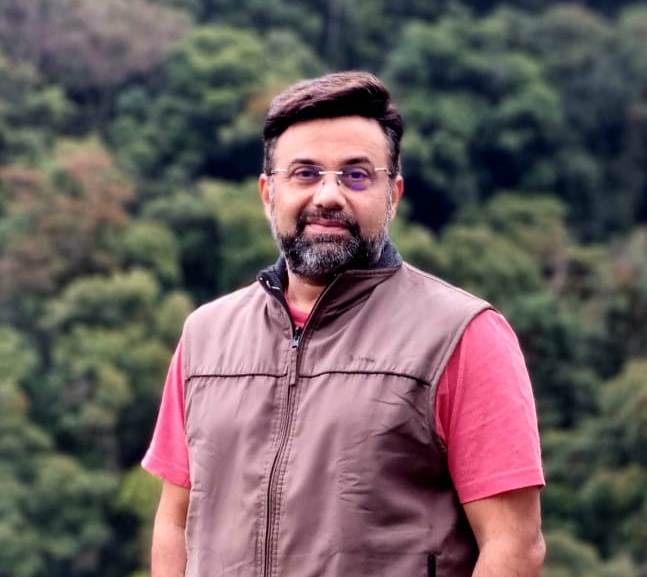 Protecting Biodiversity: A Conversation with Mr. Kedar Girish Gore, Director, The Corbett Foundation
Protecting Biodiversity: A Conversation with Mr. Kedar Girish Gore, Director, The Corbett Foundation
Q. Your winning project addresses a critical issue. Can you describe the initial challenges you identified within your specific area and how your organization's approach through this HCLTech Grant project directly addresses those challenges?
A. Our winning project focuses on addressing the critical issue of biodiversity conservation in the fragile ecosystems where the Great Indian Bustard (GIB) resides. With a global population of fewer than 150 individuals, the GIB is a critically endangered bird. Initially, we identified numerous challenges, including habitat degradation, poaching, and lack of awareness among local communities about the importance of GIB conservation. Through the HCLTech Grant project, our organization aims to address these challenges by implementing a multi-faceted approach. This includes habitat restoration initiatives, community education and engagement programs, as well as establishing partnerships with local stakeholders for sustainable conservation efforts. By directly involving communities in the process, we aim to foster a sense of ownership and responsibility towards protecting the GIB and its habitat.
Q.Your project addresses pressing needs, but success relies on community support. Describe your strategies for engaging local communities to ensure their active participation and long-term ownership of the project's outcomes.
A. Our strategies for engaging local communities are centered around fostering a sense of ownership and empowerment. Moreover, we will actively involve community members in decision-making processes and project implementation, ensuring their perspectives are considered and valued. By building strong relationships and partnerships with local communities, we aim to ensure their active participation and long-term commitment to the project's outcomes.
Based on the Kanakpar grassland model, village pastures will be restored by involving the communities (men & women) and incorporating their traditional knowledge/skills of pasture restoration. Their support/help will also be taken during the restoration process. The village women will be encouraged to manage seed banks/nurseries of indigenous plant species.
Specific approach:
1) ~8000-10000 individuals will be oriented towards grasslands conservation and its importance
2) Local youth will also be involved in ecotourism activities
3) Development of new generation of conservationists in the village to ensure longterm sustainability of grassland
4) Participation of young generations in volunteering activities related to grassland conservation
5) Improvement in the educational method through kYaan making it more interactive and easy to understand
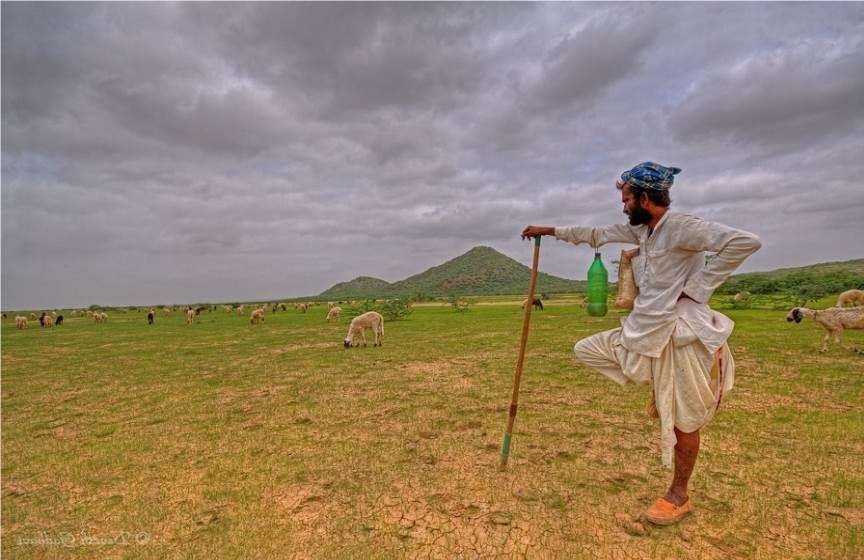
Q. How will you measure the success of your project? What evaluation methods will you use to track progress and adapt your approach if needed?
A.The success of our project will be measured through various evaluation methods, including quantitative and qualitative assessments. We will track progress through indicators such as population trends of the GIB, improvements in habitat quality, community engagement levels, and changes in awareness and attitudes towards conservation. Additionally, regular monitoring and data analysis will enable us to adapt our approach if needed, ensuring that we remain responsive to emerging challenges and opportunities.
Specific Evaluation Methods:
Quarterly progress reports having details about
a) work carried out to restore the 350 acres of grassland habitat
b) the monitoring of restored pasture plots for biodiversity assessment by researchers as well as subject experts
c) different awareness activities and work implemented to reach out to the targeted audience, d) work carried out to train Guardians of Grasslands
e) Production of high-end quality scientific work/ publication highlighting the progress of the project activities.
f) QPR will be developed based on the regular field visits of researchers for data collection, biodiversity assessments, exchanging dialogues with the local villagers, and participation of local youth in meetings/awareness programs, etc.
Q. Looking beyond the four-year grant period, what is your vision for the long-term sustainability of your project and its lasting impact on the target communities?
A. In the drought-prone Kutch-Gujarat, it takes ~4 years to develop grasslands. Once seed sowing/broadcasting is completed, except for protection/primary management, no major inputs are required. The model of Kanakpar Grassland is an example of self-sustainability where the community holds immense pride and is committed to managing the pasture scientifically.
This project aims at a few but extremely important fields viz environment, women empowerment, livelihood and skill development, climate change and animal welfare. It will not just develop a safe habitat for critically endangered bustards and their associated species but would also help in developing a self-sustainable grassland management model for villagers that would be easy to replicate in similar areas in the country. With a major focus on the self-sustainability of grasslands, the project focuses on involving villagers, especially village youth, to implement RCGS and scientific management of the grasslands in the long run.
Q. Given the elusive nature of the Great Indian Bustard, how will your project leverage technology or citizen science approaches to improve population monitoring? Will you also explore strategies like corridor creation or collaborating with private landowners to expand habitat and ensure conservation success beyond protected areas?
 A. Given the elusive nature of the Great Indian Bustard, our project will leverage technology and citizen science approaches to improve population monitoring. This will involve deploying camera traps, satellite tracking, and other advanced monitoring techniques to gather data on GIB populations and movement patterns. Additionally, we will collaborate with local communities and volunteers to collect observational data and contribute to citizen science initiatives. Furthermore, we recognize the importance of habitat connectivity for long-term conservation success and plan to explore strategies such as corridor creation and collaborating with private landowners to expand habitat beyond protected areas. By integrating these approaches, we aim to ensure a holistic approach to GIB conservation that addresses both immediate threats and long-term conservation needs.
A. Given the elusive nature of the Great Indian Bustard, our project will leverage technology and citizen science approaches to improve population monitoring. This will involve deploying camera traps, satellite tracking, and other advanced monitoring techniques to gather data on GIB populations and movement patterns. Additionally, we will collaborate with local communities and volunteers to collect observational data and contribute to citizen science initiatives. Furthermore, we recognize the importance of habitat connectivity for long-term conservation success and plan to explore strategies such as corridor creation and collaborating with private landowners to expand habitat beyond protected areas. By integrating these approaches, we aim to ensure a holistic approach to GIB conservation that addresses both immediate threats and long-term conservation needs.
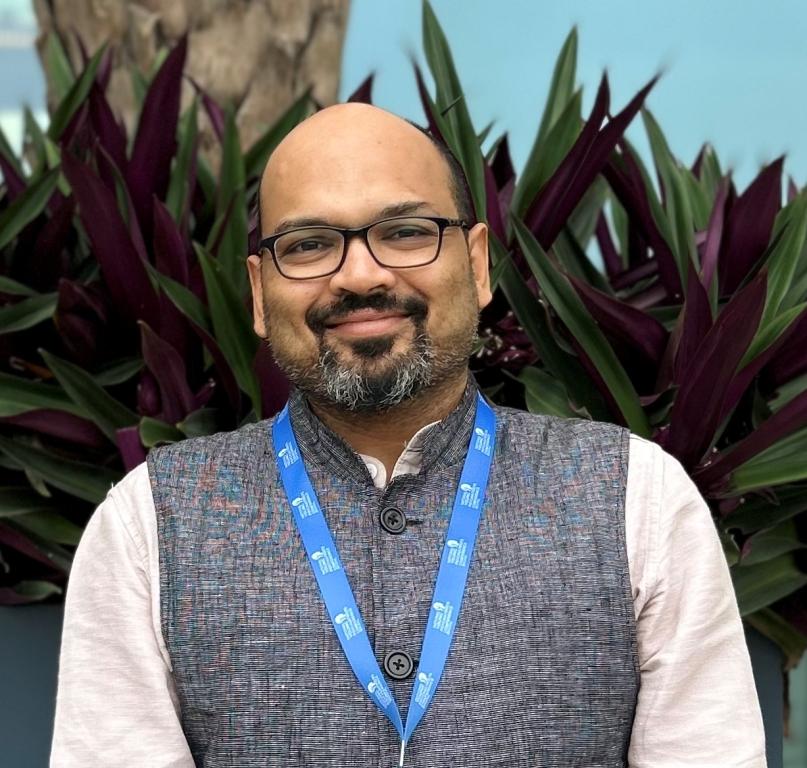
Addressing Perinatal Depression: Insights from Dr. Ravindra Agrawal, MRCPsych, Clinical Research Fellow, SANGATH
Q.Your winning project addresses a critical issue. Can you describe the initial challenges you identified within your specific area and how your organization's approach through this HCLTech Grant project directly addresses those challenges?
A. At SANGATH, we recognized that perinatal depression among women is a critical issue often overlooked due to stigma and lack of awareness. Our initial challenge was to bridge the gap in mental health support during the perinatal period, especially in underserved communities. Through the HCLTech Grant project, we're implementing a multifaceted approach. This includes training community health workers to identify and support women at risk, establishing support groups, and leveraging technology for remote counselling. By directly engaging with the issue at the grassroots level, we aim to address the initial challenges of awareness, accessibility, and stigma associated with perinatal depression.
Q. Your project addresses pressing needs, but success relies on community support. Describe your strategies for engaging local communities to ensure their active participation and long-term ownership of the project's outcomes.
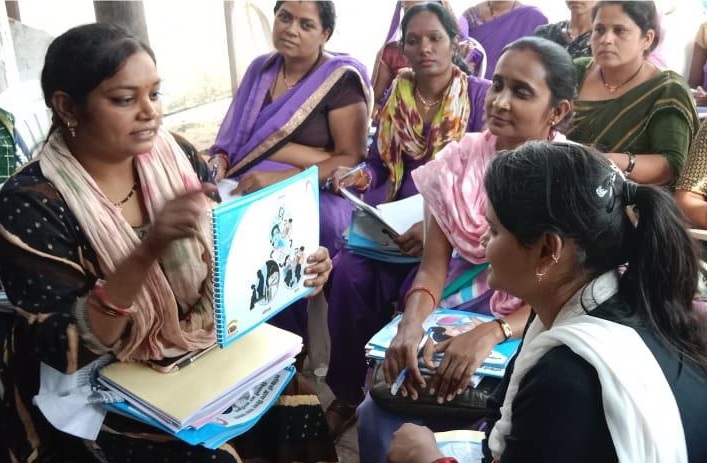 A. Engaging local communities is integral to the success and sustainability of our project. To ensure active participation and long-term ownership, we employ various strategies. We prioritize capacity building within communities, empowering individuals to take charge of their own mental health. By fostering a sense of ownership, we aim to create a sustainable model where communities are actively involved in addressing perinatal depression.
A. Engaging local communities is integral to the success and sustainability of our project. To ensure active participation and long-term ownership, we employ various strategies. We prioritize capacity building within communities, empowering individuals to take charge of their own mental health. By fostering a sense of ownership, we aim to create a sustainable model where communities are actively involved in addressing perinatal depression.
Pregnant women will receive inputs from adequately trained ASHAs for self-care andmental wellbeing. Those having perinatal depression will be identified early and receive an evidence-based intervention at home - preventing a potential detrimental effect on bonding and early nurturing of young neonates and infants. Young mothers will learn responsive parenting skills and make better nutrition choices.
Q. How will you measure the success of your project? What evaluation methods will you use to track progress and adapt your approach if needed?
A. The strength of this integrated intervention package lies in the fact that it will be embedding it in the existing systems, optimizing the human resources and addressing the a gap in the healthcare delivery without disrupting current processes. This integrated mother and child focused intervention package will not only result in immediate gains in terms of reduced perinatal distress, better obstetric and child outcomes and improved nurturing during early childhood, there will also be long term benefits in terms of achieving of development potential, alleviation of poverty and breaking the cycle of intergenerational transfer of adversity.
Further, the approach is not resource intensive, making it attractive to the policy makers and will get buy-in from health system. This will have favorable implications on the likely adoption of the approach beyond the project duration and scaling up of same in rest of Madhya Pradesh and other geographies.
Some specific evaluation methods evaluation methods, which will be used to track progress:
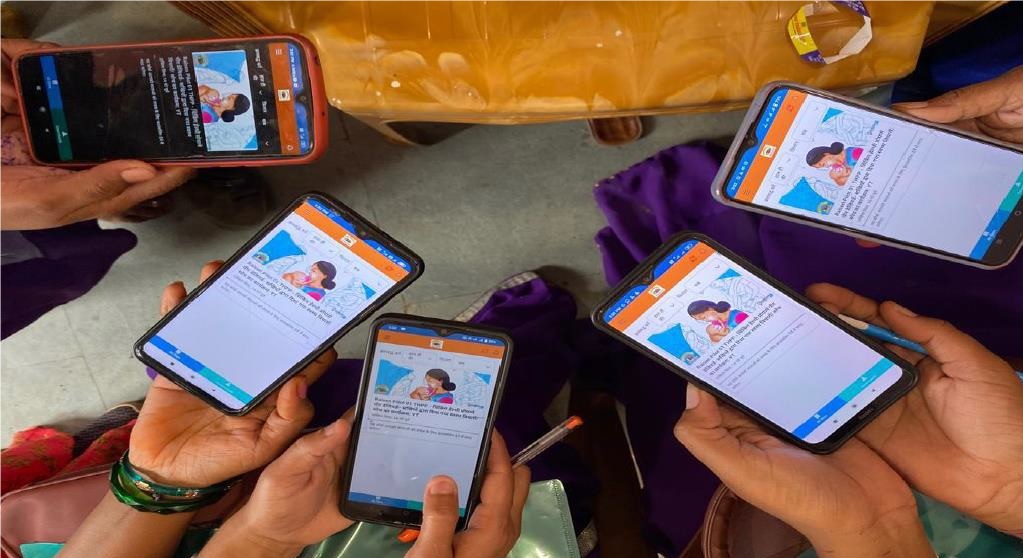 - Training logs
- Training logs
- Data Register Patient Health Questionnaire-9 outcome scores
- Competency assessment scores, supervision logs
- Referral logs
- Portfolio of engagement activities
- Attendance sheets
- Photo Documentations Referral logs
- Screening Log
- Data register Satisfaction survey
- Data register PHQ-9 baseline and outcome scores
- Testimonials from community and health system officials
Q. Looking beyond the four-year grant period, what is your vision for the long-term sustainability of your project and its lasting impact on the target communities?
A. Beyond the grant period, our vision is for the project to become ingrained within the fabric of the communities we serve. To achieve long-term sustainability, we are focusing on capacity building and local ownership. By empowering communities to sustain the initiative, we envision a lasting impact on mental health outcomes for women and families. Furthermore, we're exploring avenues for collaboration with government agencies and other stakeholders to institutionalize our approach and scale it across regions.
By the end of the project, we will build capacity and sustainability within the health systems such that the government could adopt the continued work. We will demonstrate to policy makers about the feasibility and cost-effectiveness of integrating mental health care and ECD in maternal and child care.
Q. Your "EMPOWER" project tackles a complex issue often shrouded in stigma. How will you create a safe space for women to access mental health resources and raise awareness within communities about perinatal depression?
A. Creating a safe space for women to access mental health resources and raising awareness about perinatal depression within communities are central to our 'EMPOWER' project. We employ various strategies to achieve this, including establishing confidential support groups facilitated by trained professionals, conducting community workshops to debunk myths and reduce stigma surrounding mental health, and leveraging digital platforms for anonymous support and information dissemination. Additionally, we collaborate with local influencers and healthcare providers to amplify our message and promote help-seeking behaviours. By nurturing a supportive environment, we aim to empower women to seek the assistance they need while fostering a culture of openness and understanding within their communities.
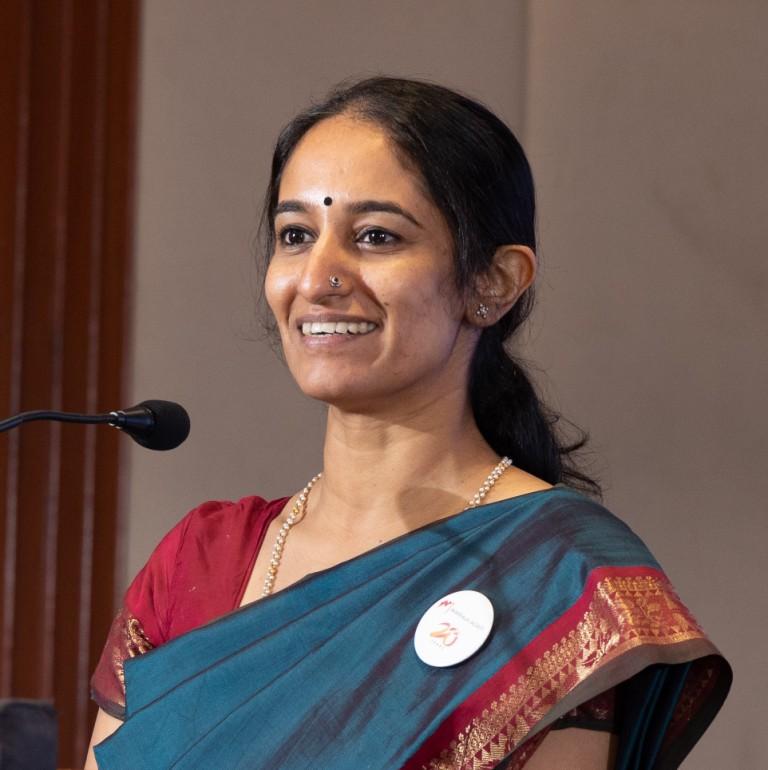
Transforming Anganwadis: A Discussion with Sunayana Chatrapathy, CEO, Makkala Jagriti
Q. Your winning project addresses a critical issue. Can you describe the initial challenges you identified within your specific area and how your organization's approach through this HCLTech Grant project directly addresses those challenges?
A. Initially, we identified significant challenges within our area regarding access to quality early childhood care and education (ECCE) in Anganwadis. Many Anganwadis lacked adequate infrastructure, trained personnel, and resources, hindering their ability to provide effective learning environments for children. Through the HCLTech Grant project, our organization aims to directly address these challenges by implementing a comprehensive approach. This includes capacity building for Anganwadi workers, improving infrastructure, developing culturally relevant curriculum and teaching materials, and fostering community involvement to ensure sustained impact.
Q.Your project addresses pressing needs, but success relies on community support. Describe your strategies for engaging local communities to ensure their active participation and long-term ownership of the project's outcomes.
A. Community support is fundamental to the success and sustainability of our project. To engage local communities, we employ a multi-faceted approach. This includes conducting community meetings and workshops to raise awareness about the importance of ECCE, actively involving parents and caregivers in decision-making processes, establishing parent-teacher committees to facilitate ongoing communication, and organizing community events that celebrate children's achievements. By fostering a sense of ownership and involvement among community members, we ensure sustained support for the project's outcomes.
Currently, Anganwadis are playing a pivotal role in child development, but they are not necessarily equipped to provide quality ECCE. The goal is to convert Anganwadis into spaces of learning, and empower Anganwadi teachers, helpers and parents in implementing activities towards early learning. Over a 3-year period, we shall build the knowledge, skills, attitude and practices of Anganwadi teachers and other stakeholders towards ECCE through training sessions, handholding, mentoring and follow-up. The ICDS_Supervisors and CDPO shall be equipped with knowledge and tools to prioritize, support and monitor the implementation of early learning in Anganwadis. Training of parents to be more involved in their children's education and events shall help in building community sensitization and ownership on the transformational impact of ECCE. Lastly, the evidences and experiences from the intervention shall be used to advocate for prioritization of ECCE at all levels in the system sustainably.
Q. How will you measure the success of your project? What evaluation methods will you use to track progress and adapt your approach if needed?
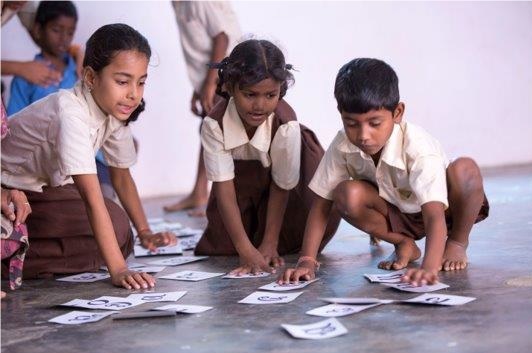 A. Success for our project will be measured through various quantitative and qualitative indicators. These include improvements in children's school readiness, increased attendance rates at Anganwadis, enhanced skills and confidence among Anganwadi workers, and positive feedback from parents and caregivers. To track progress and adapt our approach if needed, we will utilize a combination of tools such as pre and post-assessments, regular monitoring and evaluation reports, feedback surveys, and focus group discussions with stakeholders.
A. Success for our project will be measured through various quantitative and qualitative indicators. These include improvements in children's school readiness, increased attendance rates at Anganwadis, enhanced skills and confidence among Anganwadi workers, and positive feedback from parents and caregivers. To track progress and adapt our approach if needed, we will utilize a combination of tools such as pre and post-assessments, regular monitoring and evaluation reports, feedback surveys, and focus group discussions with stakeholders.
The Project employs an ‘ecosystem approach’ wherein all stakeholders who can influence quality early education of children in Anganwadis are involved right from inception through an inclusive and non-threatening approach. Practices like shared visioning, collective thinking and empowerment through training and capacity building shall equip all the stakeholders to play their roles more effectively. These stakeholders include the Anganwadi Teachers (Workers), Helpers, ICDS Supervisors, Parents and the larger community. While the capacity building of ICDS functionaries will help create a conducive space and institutionalization of good ECCE practices, the work with parents and the larger community shall be instrumental in sensitizing them about their role in their children’s education and create demand for quality education. The right to early childhood education is as important as the right to education, if not more.
The project will have a strong monitoring and evaluation component with assessments of children, Anganwadi teachers, helpers, parents and even the grading of Anganwadis at key points in the course of the intervention. These assessments will inform tactical and strategic changes needed, if any, on a regular basis. We are also conscious about using the children assessment formats prescribed by the Ministry of Women and Child Development Govt. of India, which are developed by UNICEF and CECED, Ambedkar University. We shall be using technology for digitizing and analyzing the data and also for communication across the stakeholder groups. Promotion of digital platforms by empowering Anganwadi teachers to optimize the use of Smartphones to streamline and simplify their work would be a component integrated in the program.
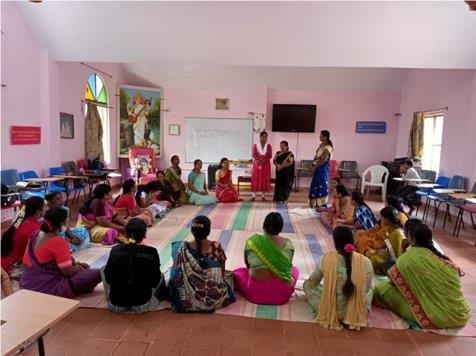 Q. Looking beyond the four-year grant period, what is your vision for the long-term sustainability of your project and its lasting impact on the target communities?
Q. Looking beyond the four-year grant period, what is your vision for the long-term sustainability of your project and its lasting impact on the target communities?
A. The project is designed to sustainably strengthen the existing system and functionaries responsible for providing quality ECCE in Anganwadis. The Build-Monitor-Transfer model ensures that ECCE practices by different stakeholders are sustained beyond the project period. The last phase particularly focuses on advocacy towards close monitoring of quality ECCE implementation by the Department
Q. Your project aims to transform Anganwadis. Can you elaborate on how you'll not only improve the quality of early childhood care and education but also ensure these improvements are scalable and replicable across other Anganwadis in the region?
A. Our approach to transforming Anganwadis not only focuses on immediate improvements but also prioritizes scalability and replicability. We plan to document and disseminate best practices, lessons learned, and success stories to other Anganwadis in the region. Additionally, we will advocate for policy changes at the local and state levels to mainstream our model of ECCE provision. By empowering communities with the knowledge and resources to implement similar interventions, we aim to catalyze a broader movement towards improving early childhood care and education across the region and beyond.



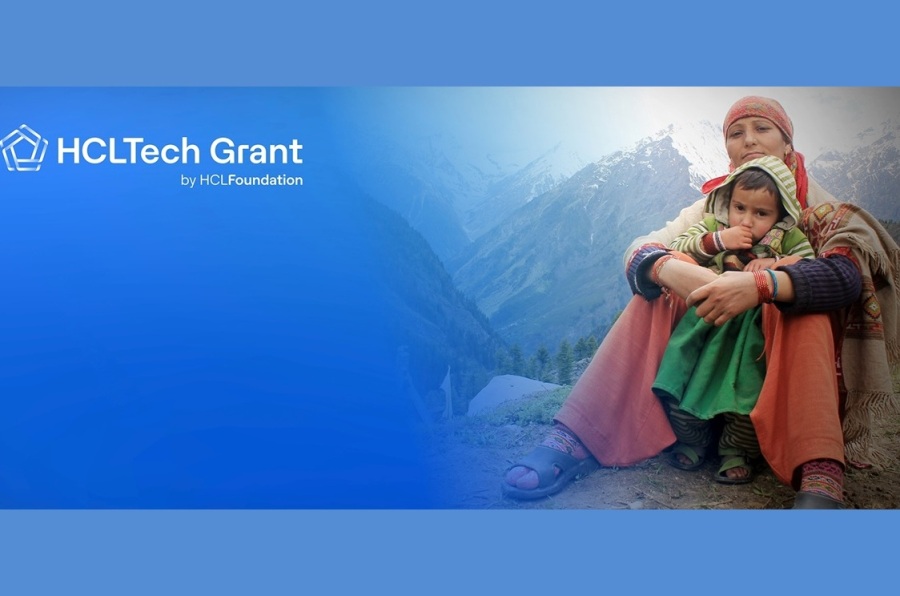
 Driving Meaningful Change: Insights from Dr. Nidhi Pundhir
Driving Meaningful Change: Insights from Dr. Nidhi Pundhir Protecting Biodiversity: A Conversation with Mr. Kedar Girish Gore, Director, The Corbett Foundation
Protecting Biodiversity: A Conversation with Mr. Kedar Girish Gore, Director, The Corbett Foundation
 A. Given the elusive nature of the Great Indian Bustard, our project will leverage technology and citizen science approaches to improve population monitoring. This will involve deploying camera traps, satellite tracking, and other advanced monitoring techniques to gather data on GIB populations and movement patterns. Additionally, we will collaborate with local communities and volunteers to collect observational data and contribute to citizen science initiatives. Furthermore, we recognize the importance of habitat connectivity for long-term conservation success and plan to explore strategies such as corridor creation and collaborating with private landowners to expand habitat beyond protected areas. By integrating these approaches, we aim to ensure a holistic approach to GIB conservation that addresses both immediate threats and long-term conservation needs.
A. Given the elusive nature of the Great Indian Bustard, our project will leverage technology and citizen science approaches to improve population monitoring. This will involve deploying camera traps, satellite tracking, and other advanced monitoring techniques to gather data on GIB populations and movement patterns. Additionally, we will collaborate with local communities and volunteers to collect observational data and contribute to citizen science initiatives. Furthermore, we recognize the importance of habitat connectivity for long-term conservation success and plan to explore strategies such as corridor creation and collaborating with private landowners to expand habitat beyond protected areas. By integrating these approaches, we aim to ensure a holistic approach to GIB conservation that addresses both immediate threats and long-term conservation needs.
 A. Engaging local communities is integral to the success and sustainability of our project. To ensure active participation and long-term ownership, we employ various strategies. We prioritize capacity building within communities, empowering individuals to take charge of their own mental health. By fostering a sense of ownership, we aim to create a sustainable model where communities are actively involved in addressing perinatal depression.
A. Engaging local communities is integral to the success and sustainability of our project. To ensure active participation and long-term ownership, we employ various strategies. We prioritize capacity building within communities, empowering individuals to take charge of their own mental health. By fostering a sense of ownership, we aim to create a sustainable model where communities are actively involved in addressing perinatal depression. - Training logs
- Training logs 
 A. Success for our project will be measured through various quantitative and qualitative indicators. These include improvements in children's school readiness, increased attendance rates at Anganwadis, enhanced skills and confidence among Anganwadi workers, and positive feedback from parents and caregivers. To track progress and adapt our approach if needed, we will utilize a combination of tools such as pre and post-assessments, regular monitoring and evaluation reports, feedback surveys, and focus group discussions with stakeholders.
A. Success for our project will be measured through various quantitative and qualitative indicators. These include improvements in children's school readiness, increased attendance rates at Anganwadis, enhanced skills and confidence among Anganwadi workers, and positive feedback from parents and caregivers. To track progress and adapt our approach if needed, we will utilize a combination of tools such as pre and post-assessments, regular monitoring and evaluation reports, feedback surveys, and focus group discussions with stakeholders.  Q. Looking beyond the four-year grant period, what is your vision for the long-term sustainability of your project and its lasting impact on the target communities?
Q. Looking beyond the four-year grant period, what is your vision for the long-term sustainability of your project and its lasting impact on the target communities?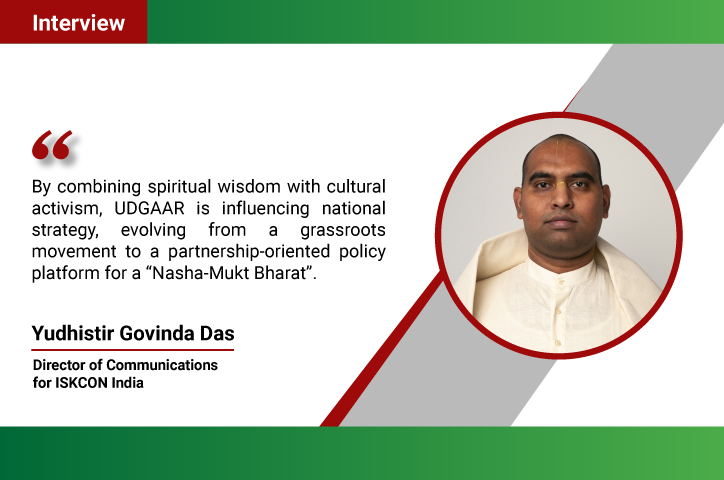

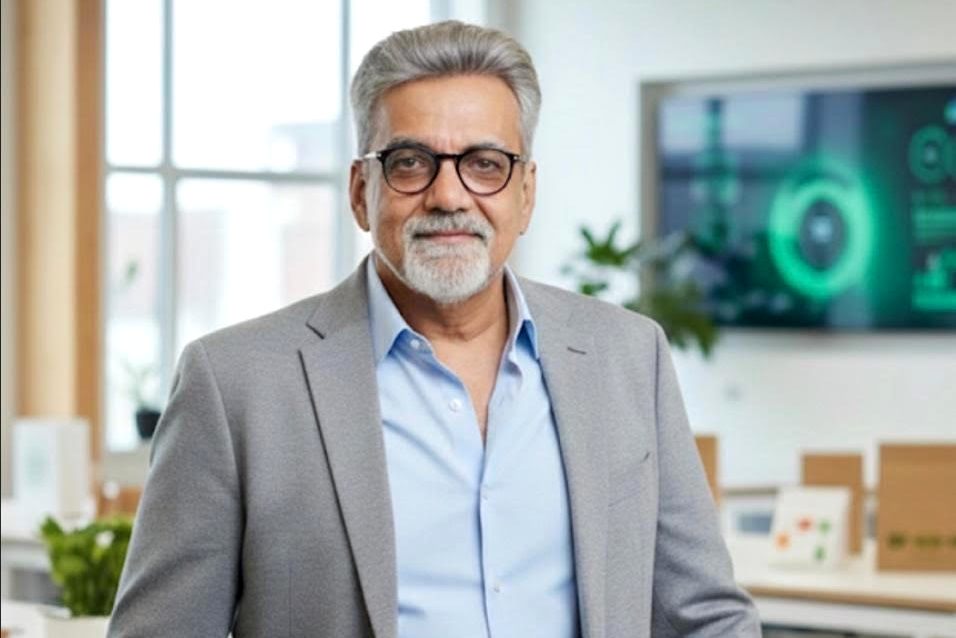


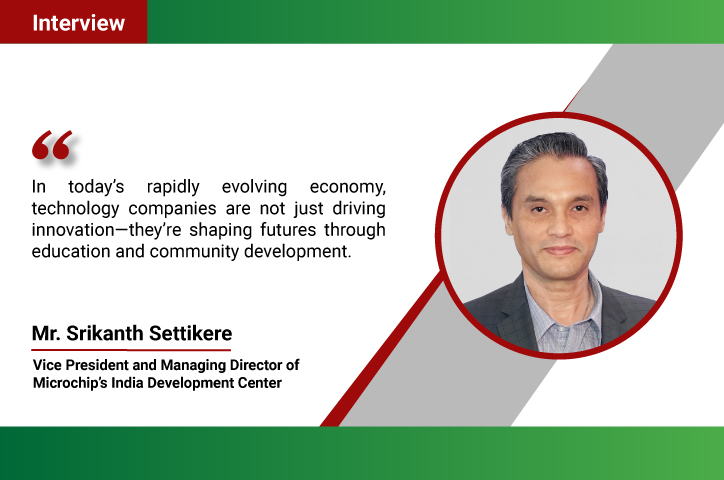
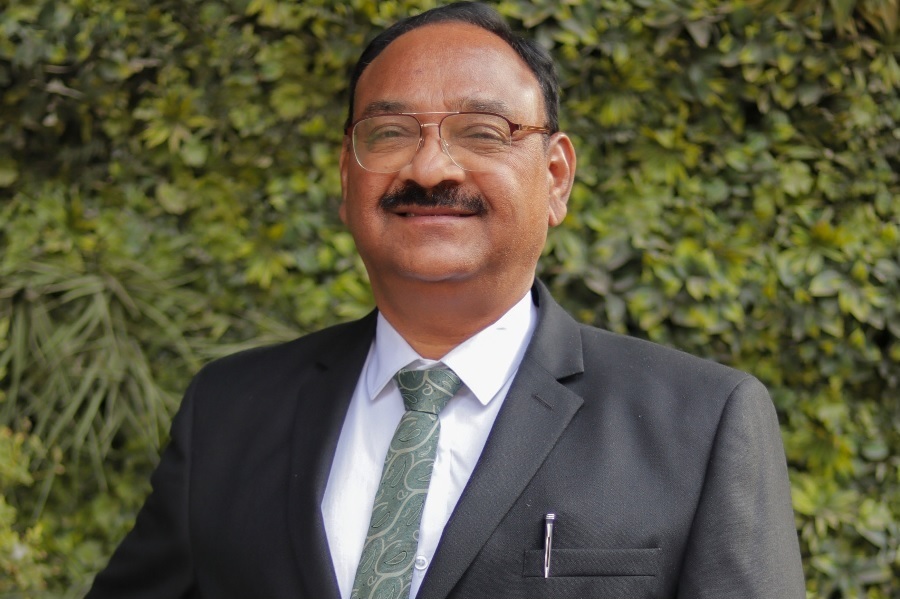
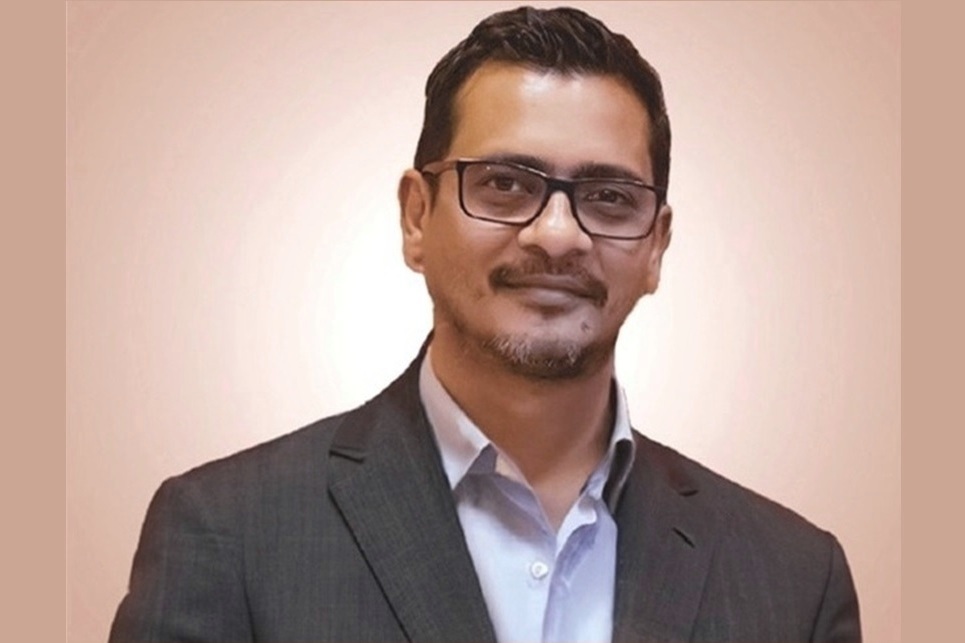


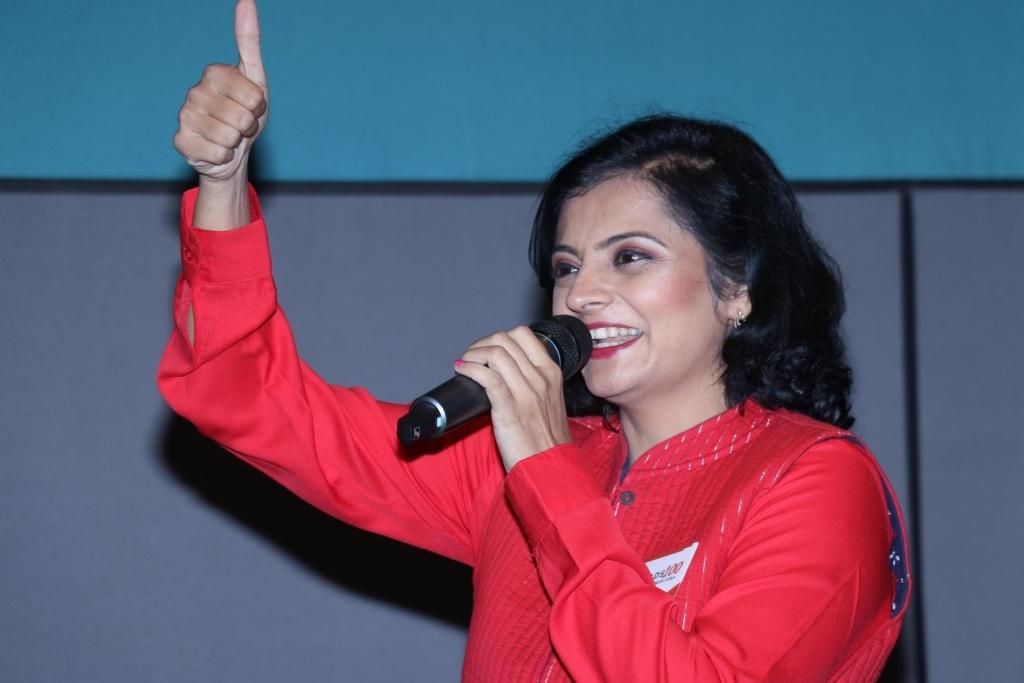
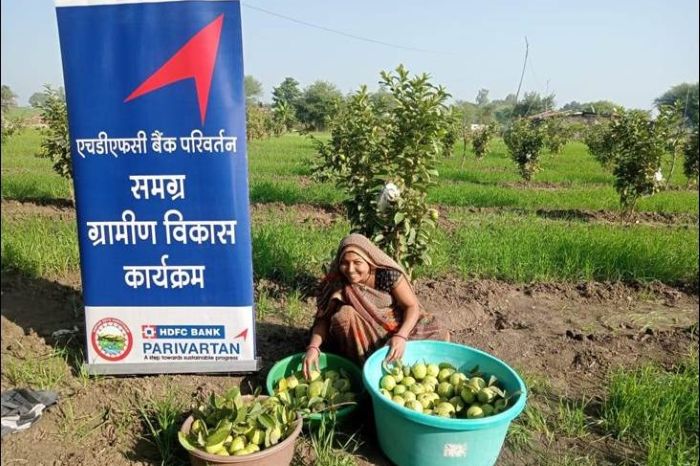


.jpg)




